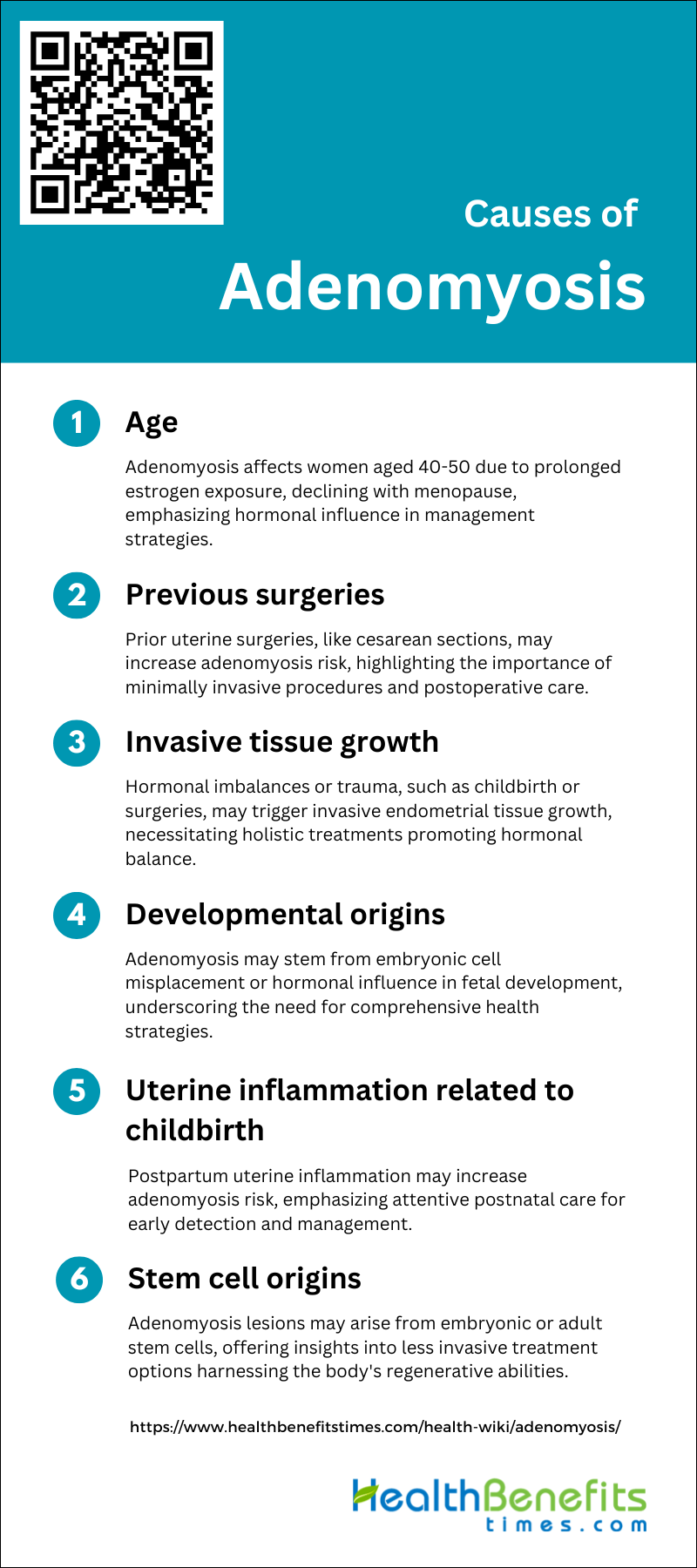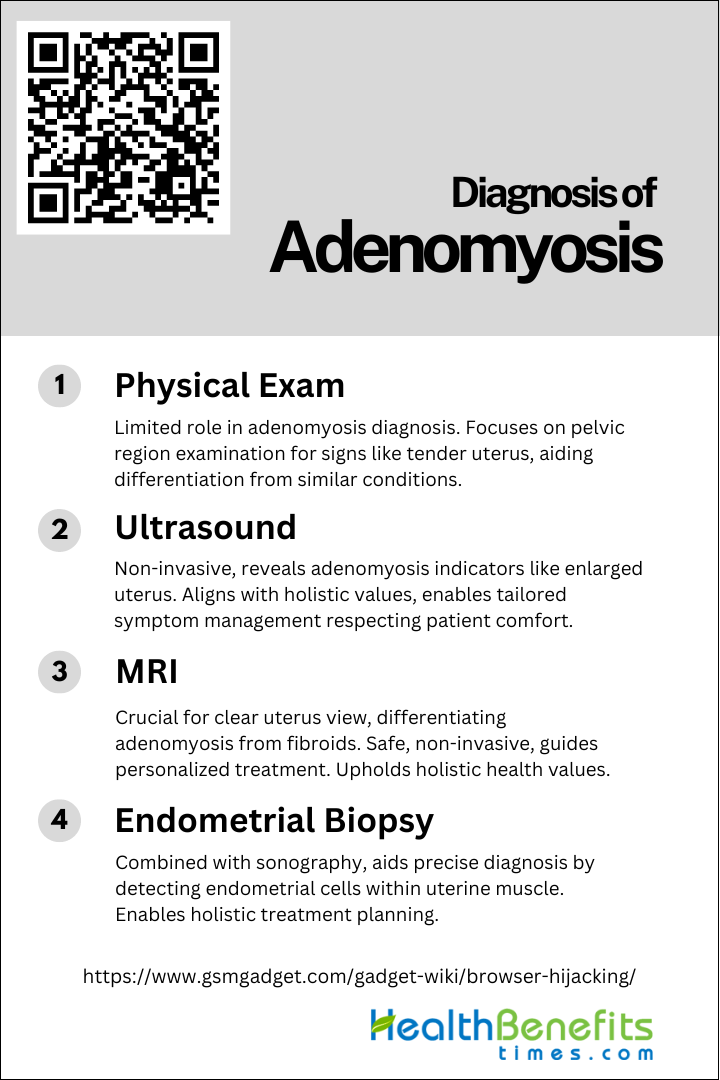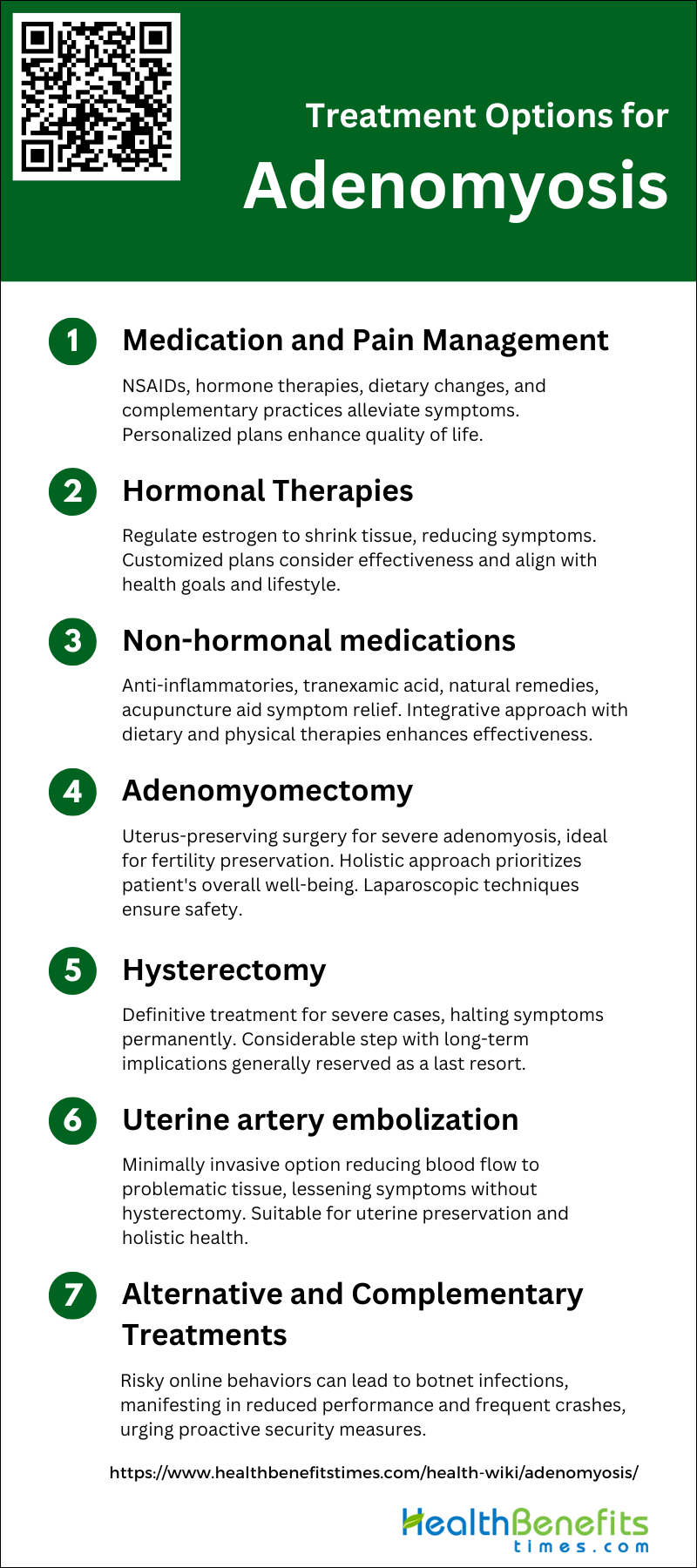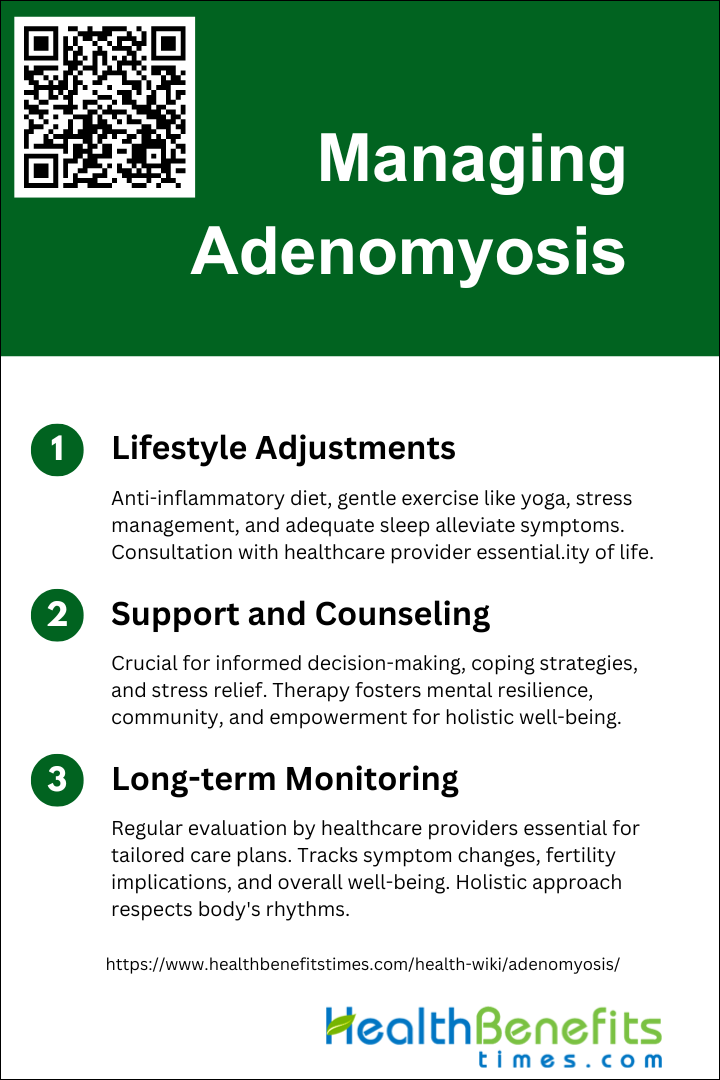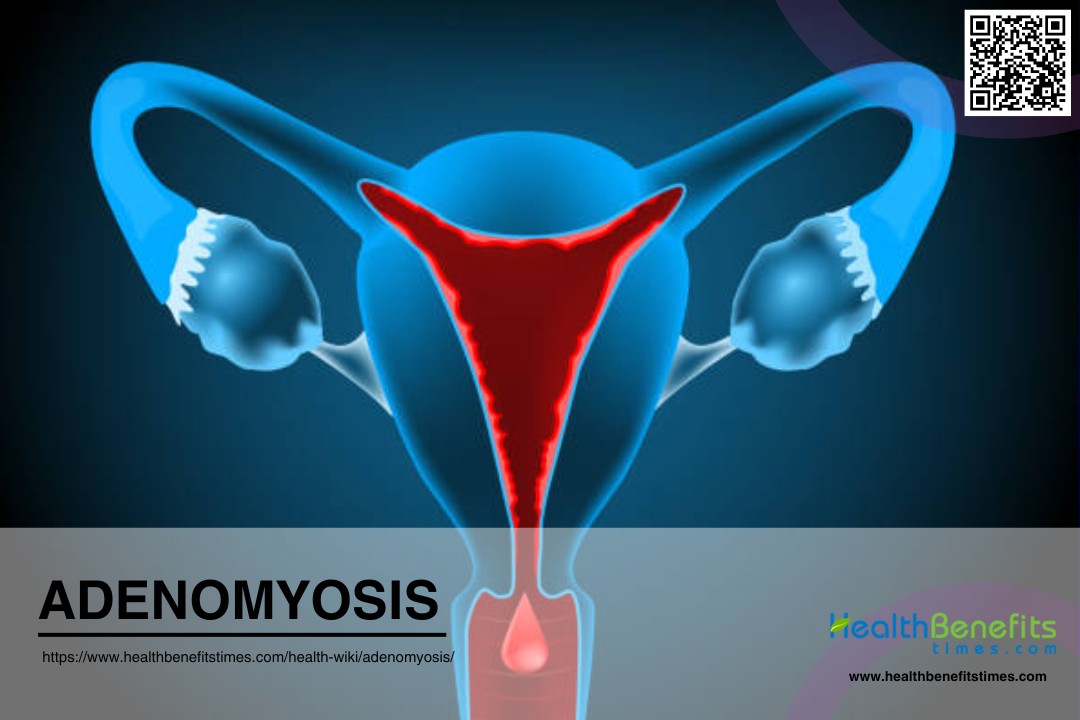 Adenomyosis is a benign uterine condition where endometrial tissue grows within the myometrium, often causing heavy menstrual bleeding and pain. Adenomyosis, a common yet often misunderstood condition, occurs when the uterus’s inner lining, the endometrium, grows into its muscular wall, resulting in a thickened uterine wall. Women, particularly in their middle years or those who have had children, may experience a variety of symptoms, such as heavy menstrual bleeding, severe cramps, and abdominal bloating. Although the precise cause is unknown, hormonal and immune system factors are thought to play a role. A holistic health approach, focusing on a comprehensive wellness strategy, is vital for managing the physical discomfort and promoting overall reproductive health. This includes proper nutrition, stress management, and alternative therapies, offering a balanced and informed path for those affected by adenomyosis to improve their quality of life.
Adenomyosis is a benign uterine condition where endometrial tissue grows within the myometrium, often causing heavy menstrual bleeding and pain. Adenomyosis, a common yet often misunderstood condition, occurs when the uterus’s inner lining, the endometrium, grows into its muscular wall, resulting in a thickened uterine wall. Women, particularly in their middle years or those who have had children, may experience a variety of symptoms, such as heavy menstrual bleeding, severe cramps, and abdominal bloating. Although the precise cause is unknown, hormonal and immune system factors are thought to play a role. A holistic health approach, focusing on a comprehensive wellness strategy, is vital for managing the physical discomfort and promoting overall reproductive health. This includes proper nutrition, stress management, and alternative therapies, offering a balanced and informed path for those affected by adenomyosis to improve their quality of life.
Causes of Adenomyosis
Adenomyosis, a common yet often misunderstood condition, occurs when the uterus’s inner lining grows into its muscular wall, causing severe menstrual cramps, heavy bleeding, and pain during intercourse. Affecting primarily middle-aged women and those who have had children, the exact causes are unknown, but awareness is key for holistic health practitioners and patients to manage symptoms and enhance well-being.
1. Age
Where the uterus’s inner lining grows into its muscle wall, is notably linked to age, affecting mainly women aged 40 to 50. This suggests that long-term exposure to estrogen may play a role in its development. As estrogen levels drop with menopause, the risk of adenomyosis also declines, highlighting a connection between reproductive hormones and the condition. For holistic health professionals, these age-related insights are key to crafting prevention and treatment plans that respect the natural hormonal shifts in a woman’s life. This understanding is essential for promoting wellness and managing symptoms in tune with the body’s rhythms.
2. Previous surgeries
A condition marked by the invasive growth of endometrial tissue into the uterine muscle, can be exacerbated by previous uterine surgeries like cesarean sections and fibroid removals. Previous uterine surgeries have been implicated as a potential risk factor for the development of adenomyosis. These procedures may compromise the boundary between the endometrium and myometrium, setting the stage for endometrial cells to infiltrate and thicken the uterine walls, leading to symptoms such as heavy bleeding and pelvic pain. Holistic health perspectives stress the significance of recognizing these risk factors and the benefits of minimally invasive surgeries and supportive postoperative care to promote natural healing and preserve uterine health. It is vital to understand the potential impact of surgical history on conditions like adenomyosis to inform better health decisions and management strategies.
3. Invasive tissue growth
It is believed that this invasive tissue growth can be triggered by hormonal imbalances, inflammation, or physical trauma from events like childbirth or surgeries. The disruption of the boundary between the endometrium and the myometrium, often following a cesarean section or similar procedures, may facilitate the deeper invasion of endometrial cells. Recognizing the underlying causes is vital for creating treatments that focus on the condition’s origin, emphasizing the need for holistic health strategies that promote hormonal balance and uterine well-being. This approach aligns with the principles of a holistic health, fitness, and wellness website, advocating for natural methods to maintain the body’s equilibrium.
4. Developmental origins
The causes of adenomyosis are not fully understood, but developmental origins are considered significant. Two main theories explain its onset: invagination of the endometrial basalis into the myometrium and metaplasia of embryonic remnants or adult stem cells. Disordered stromal differentiation, as evidenced by altered gene expression affecting myometrial formation, suggests that developmental defects may play a crucial role. Adenomyosis, where endometrial tissue grows within the uterus muscle, is a condition with unclear origins that fascinate medical researchers. It’s thought to possibly start in the womb, with misplaced embryonic stem cells or from trauma, and is influenced by hormones like estrogen. Holistic health experts are keen to understand these roots to better tackle the condition’s underlying causes. The theory that adenomyosis could stem from fetal development suggests a genetic and developmental interplay that is critical for comprehensive health strategies.
5. Uterine inflammation related to childbirth
Childbirth, while a transformative experience, can sometimes lead to uterine inflammation and the subsequent risk of adenomyosis, a condition where the endometrial tissue grows into the uterine muscle. The trauma of delivery can disrupt the uterine lining, potentially allowing these cells to become embedded within the muscle wall, particularly if postpartum recovery is hindered by complications such as infection or heavy bleeding. Holistic health practices stress the significance of attentive postnatal care to manage inflammation and aid the body’s healing, thereby possibly diminishing the likelihood of such issues. Recognizing the signs of adenomyosis, like pelvic pain and heavy periods, is crucial for early detection and management, underscoring the value of thorough postpartum monitoring.
6. Stem cell origins
Stem cell origins are implicated in its pathogenesis, with theories suggesting that adenomyotic lesions may arise from metaplasia of embryonic pluripotent Müllerian remnants or differentiation of adult stem cells. The theory posits that bone marrow-derived stem cells may mistakenly implant in the uterine muscle, where they can grow and act like endometrial cells, disrupting the uterus’s structure and causing pain. This understanding of stem cell involvement not only sheds light on the disease’s mechanisms but also suggests new, less invasive treatment options that work in harmony with the body’s healing abilities. These potential therapies could revolutionize the management of adenomyosis, offering relief and hope to those who suffer from this challenging condition. By tapping into the body’s natural regenerative powers.
Symptoms of Adenomyosis
Characterized by the growth of endometrial tissue into the muscular wall of the uterus, it presents a range of symptoms that can be both painful and perplexing. Understanding these symptoms is the first step towards seeking relief and managing the condition effectively. Below is a list of common symptoms associated with Adenomyosis that individuals may experience.
- Painful menstrual cramps (dysmenorrhea)
- Heavy menstrual bleeding (menorrhagia)
- Abnormal menstruation
- Pelvic pain with or without severe cramping
- Painful intercourse (dyspareunia)
- Infertility
- Enlarged uterus
- Bloating or fullness in your belly (adenomyosis belly)
Diagnosis of Adenomyosis
Diagnosing this elusive condition requires a multifaceted approach, combining patient history, clinical examination, and advanced imaging techniques. Here, we explore the various methods and technologies used to diagnose adenomyosis effectively.
1. Physical Exam
Physical examination plays a limited role in diagnosing adenomyosis, a condition traditionally confirmed through histopathology post-hysterectomy. A healthcare provider will meticulously examine the pelvic region, feeling for signs like a tender or enlarged uterus, which could indicate the presence of adenomyosis. This non-invasive method is vital for distinguishing adenomyosis from similar gynecological conditions such as fibroids or endometriosis. Open communication about symptoms is crucial, as the physical exam’s insights are integral to developing a comprehensive wellness plan that addresses the multifaceted nature of adenomyosis.
2. Ultrasound
Transvaginal ultrasound emerges as a gentle yet powerful tool in the diagnosis of adenomyosis, offering hope to women grappling with pelvic discomfort and excessive menstrual flow. As a non-invasive glimpse into the uterus, it reveals key indicators of the condition, including an enlarged uterus and diverse, dense regions within the uterine muscle. This technique is celebrated for its safety and ease of access, resonating with the wellness community’s values of minimally invasive practices. By providing essential insights into reproductive health, it enables women to manage their symptoms in a way that respects their body’s integrity and overall health. The significance of ultrasound in diagnosing adenomyosis lies in its ability to deliver trustworthy results without resorting to more intrusive methods, thus embodying a holistic health ethos that places patient comfort at the forefront.
3. MRI
Magnetic Resonance Imaging (MRI) is a critical, non-invasive diagnostic tool for adenomyosis, providing a clear view of the uterus and revealing key indicators such as junctional zone thickening and myometrial cysts. Its high-resolution images are instrumental in differentiating adenomyosis from conditions like fibroids, offering a level of specificity that avoids unnecessary surgery. MRI excels in identifying the precise characteristics and extent of adenomyosis, whether diffuse or focal, without exposing patients to ionizing radiation. This aligns with the values of holistic health by prioritizing safe, non-invasive diagnostic options. Consequently, MRI is invaluable for those pursuing wellness, as it guides the exploration of appropriate treatment paths tailored to individual health needs.
4. Endometrial biopsy
Endometrial biopsy is a pivotal diagnostic tool for adenomyosis, offering high specificity when combined with transvaginal sonography. By extracting and examining a small sample of uterine lining, healthcare providers can detect the presence of endometrial cells within the uterine muscle, aiding in the differentiation from other conditions like hyperplasia or cancer. Although not a standalone definitive test, when paired with imaging techniques such as ultrasound or MRI, the biopsy contributes to a more precise diagnosis by revealing the extent of endometrial tissue infiltration. This comprehensive diagnostic process enables practitioners to design personalized, holistic treatment plans that address the physical, emotional, and mental well-being of individuals facing adenomyosis.
Complication of Adenomyosis
As the endometrial tissue grows into the muscular walls of the uterus, it can lead to a series of complications that extend beyond mere discomfort. On our holistic health, fitness, and wellness-focused website, we aim to shed light on these potential complications, providing our readers with the knowledge they need to seek comprehensive care and support. Here is a list of complications associated with Adenomyosis that every woman should be aware of.
- Fertility problems
- Higher risk of pregnancy complications
- Anaemia from heavy bleeding
- Fatigue
- Dizziness
- Fainting
- Lightheadedness
- Shortness of breath
Treatment Options for Adenomyosis
Adenomyosis is a challenging gynecological condition that causes the inner lining of the uterus to break through the muscle wall of the uterus, leading to painful and heavy periods. While there is no one-size-fits-all solution, various treatment options can help manage symptoms effectively. Here, we explore the most common and effective treatments for adenomyosis, tailored to suit different needs and life stages.
1. Medication and Pain Management
Effective pain management is crucial for improving the quality of life for those experiencing discomfort. Common treatments include NSAIDs like ibuprofen to ease pain and inflammation, and hormone therapies such as birth control pills or IUDs to manage menstrual cycles and reduce bleeding. For a holistic approach, dietary changes that emphasize anti-inflammatory foods, regular exercise, and the use of heat packs can provide natural relief. Complementary practices such as acupuncture, yoga, and pelvic physiotherapy are also becoming popular for their ability to alleviate pain without medication. Consulting with a healthcare provider is vital to create a personalized treatment plan that considers individual health preferences and effectively addresses the condition.
2. Hormonal Therapies
Hormonal therapies play a pivotal role in managing adenomyosis, leveraging the disease’s estrogen dependency. By regulating hormone levels and reducing estrogen, treatments like oral contraceptives, progestin-only medications, and GnRH agonists can shrink this tissue and ease symptoms. The levonorgestrel-releasing intrauterine system and dienogest are also effective in lessening menstrual bleeding and discomfort. While these therapies offer relief, they are not a cure, and their effectiveness varies. Consulting with a healthcare provider is crucial to customize a treatment plan that aligns with one’s health goals and lifestyle for a comprehensive approach to wellness.
3. Non-hormonal medications
Non-hormonal medications play a supportive role in the management of adenomyosis, particularly for symptom relief. Over-the-counter anti-inflammatory drugs like ibuprofen and naproxen can reduce pain and bleeding, while tranexamic acid, a non-hormonal medication, works to lessen menstrual flow by helping blood clot. Natural remedies such as turmeric, with its active component curcumin, provide anti-inflammatory benefits, and acupuncture is recognized for its potential to diminish pain through relaxation and energy balance. It’s crucial to work with a healthcare provider to create a personalized treatment strategy that fits within one’s overall health objectives. This integrative approach can include dietary modifications and physical therapies, ensuring a comprehensive plan for those seeking holistic health solutions.
4. Adenomyomectomy
Adenomyomectomy offers a uterus-preserving option for women with severe adenomyosis, particularly those desiring fertility. This procedure focuses on removing only the diseased tissue, unlike a hysterectomy which takes out the entire uterus, thus maintaining the uterus’s integrity and the woman’s reproductive capabilities. It’s an especially valuable option for those suffering from severe symptoms that still hold aspirations of conceiving. Embracing a holistic health perspective, adenomyomectomy is not just about surgical precision but also about nurturing the patient’s overall well-being, addressing the physical discomfort as well as the emotional and mental health aspects during the healing process. Advanced techniques, such as laparoscopic surgery, further ensure a safer procedure with a smoother recovery, aligning with the goals of health restoration and maintaining quality of life.
5. Hysterectomy
Hysterectomy has historically been the definitive treatment for adenomyosis, particularly when other treatments fail to alleviate symptoms. This major surgical procedure, which involves the removal of the uterus, can significantly enhance quality of life by permanently halting the distressing symptoms and menstrual cycles. However, it’s a considerable step with a substantial recovery period and possible long-term consequences like early menopause and hormonal shifts. As such, it’s generally viewed as a final option, and it’s essential to seek professional medical advice to weigh all treatment avenues for a comprehensive approach to health and wellness.
- Abdominally
- Laparoscopically
- Vaginally
6. Uterine artery embolization
Uterine artery embolization (UAE) offers a minimally invasive solution for adenomyosis sufferers, providing significant symptom relief without the need for a hysterectomy. By injecting small particles to obstruct the uterine arteries, this procedure, led by an interventional radiologist, reduces blood flow to the problematic tissue, thereby lessening heavy bleeding and intense pain. UAE is a favorable choice for those prioritizing uterine preservation and embracing a holistic health perspective. Patients interested in this non-surgical route should discuss its suitability and potential risks with their healthcare provider. Overall, UAE stands as a promising option within the holistic health and wellness sphere for managing the challenges of adenomyosis.
7. Alternative and Complementary Treatments
Alternative and complementary treatments can offer relief without the need for surgery. Acupuncture is a key treatment, known for its ability to lessen pelvic discomfort and regulate menstruation by harmonizing the body’s vital energy. Herbal remedies, including chasteberry, ginger, Vitex, and black cohosh, are celebrated for their hormone-balancing and anti-inflammatory properties. Nutritional strategies are equally vital, with a focus on anti-inflammatory foods and supplements such as fish oil and turmeric, while avoiding known irritants like gluten and dairy. Moreover, incorporating mind-body practices such as yoga and meditation can aid in managing stress and pain, offering a comprehensive treatment regimen. Always remember to collaborate with a healthcare provider to customize these therapies to your unique health needs, ensuring they integrate safely with your overall care strategy.
Managing Adenomyosis
Managing this condition effectively requires a comprehensive approach that includes medical treatments, lifestyle adjustments, and holistic therapies. Here are some strategies that can help alleviate the symptoms and improve quality of life for those affected by adenomyosis.
1. Lifestyle Adjustments
A diet filled with anti-inflammatory foods, including leafy greens, omega-3s, turmeric, and berries, can lessen pelvic discomfort and bloating. Engaging in gentle exercises like yoga and swimming helps improve circulation and balance hormones, while also easing stress. Mindfulness practices and adequate sleep are key in regulating hormonal imbalances and enhancing emotional well-being. It’s essential to consult with a healthcare provider to customize these strategies for your unique needs, which, alongside medical care, can greatly improve life with adenomyosis.
2. Support and Counseling
Support and counseling are crucial for patients to understand their options and make informed decisions. Counseling plays a pivotal role, offering tailored coping strategies and stress relief to address the mind-body connection, essential for overall well-being. Integrative wellness plans often include therapy to bolster mental resilience, recognizing the deep interplay between mental and physical health. By participating in support groups and counseling, individuals can share their experiences, fostering a sense of community and empowerment. This comprehensive approach is vital for navigating the complexities of adenomyosis, enabling individuals to regain control and improve their quality of life.
3. Long-term Monitoring
A condition known for its chronic nature and variable intensity, long-term monitoring is key to tailoring a personal care plan that prioritizes symptom relief and quality of life. Long-term monitoring of adenomyosis is crucial due to its association with adverse fertility and pregnancy outcomes, as well as its recurrent nature. Regular consultations with healthcare providers are recommended to evaluate the effectiveness of treatments and track changes in menstrual patterns, pain, and overall well-being. This patient-focused strategy allows for adjustments in management based on individual experiences, reducing the need for constant medical oversight. Embracing a holistic health approach, individuals with adenomyosis can maintain their health with minimal interventions, respecting the body’s natural rhythms and the importance of self-care.


